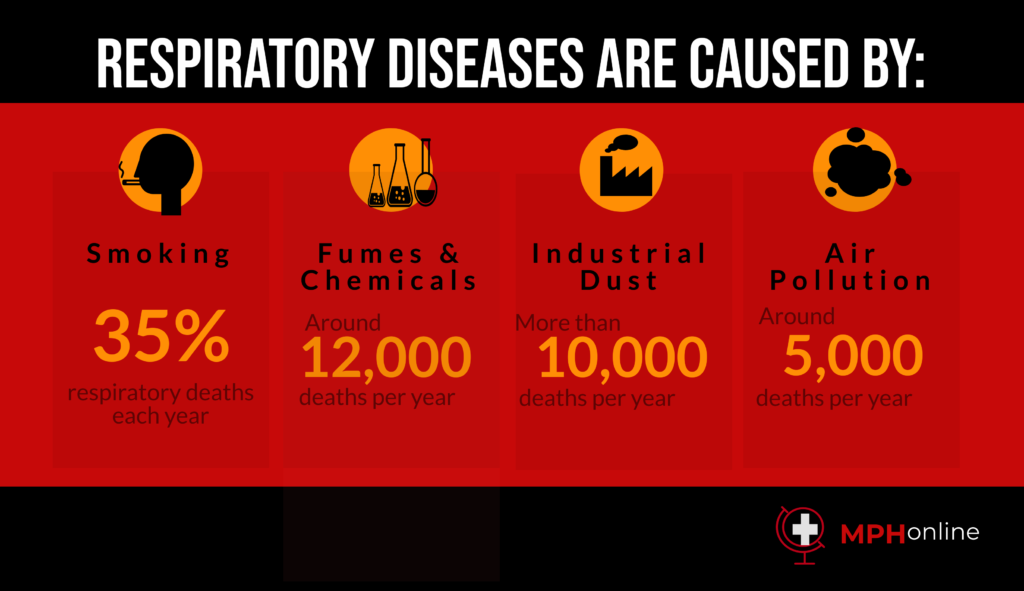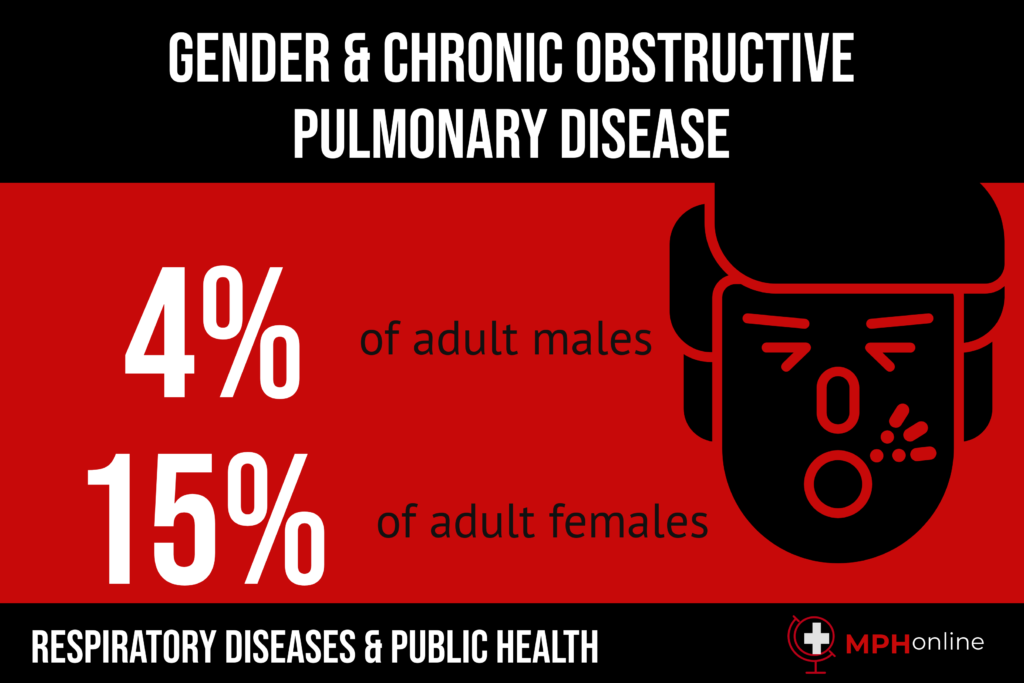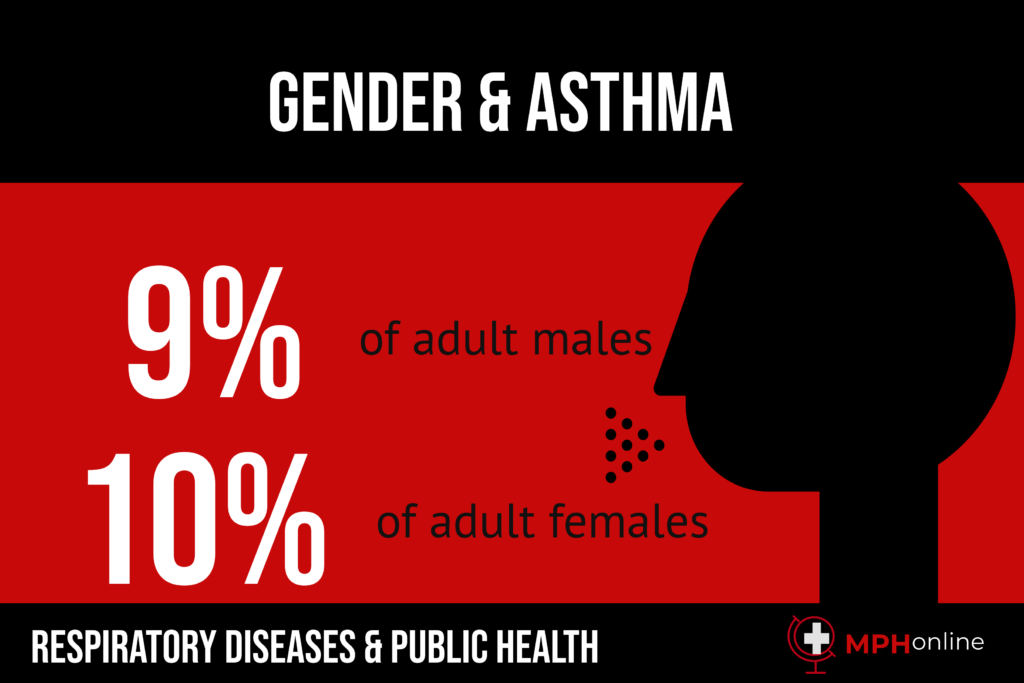Lung disease references those disorders and conditions that affect the lungs. If you are interested in lung disease and public health, it is important to ask the right questions to ensure you receive the information you need. Consider researching questions like –
- What is chronic lung disease?
- How can you learn how to prevent lung disease naturally, without the use of chemicals?
- What is the most common chronic lung disease?
- How can you learn how to prevent chronic lung disease after you quit smoking?
- How can you learn how to prevent lung disease in children?
- How can lung disease be prevented?

What are Common Diseases of the Lungs?
A chronic lung disease is any lung disease that persists for a long time or is constantly recurring in a patient.
Lung disease refers to any issue in the lungs or pulmonary system that prevents the lungs from functioning properly. There are three fundamental kinds of lung disease. Each type of disorder determines what is a chronic lung disease, as follows –
- Airway Diseases – airway lung diseases are the most common lung diseases. The symptoms of a chronic respiratory disease like airway disease cause blockages or the narrowing of airways, making it difficult to take a full breath of air. Types of chronic lung diseases of the airway variety include –
- Asthma
- Chronic Obstructive Pulmonary Disease – COPD
- Emphysema
- Bronchitis, among others.
- Circulation Diseases – these types of chronic lung diseases affect the lung’s blood vessels, which can become scarred or inflamed. Circulation diseases of the lung also impact the functioning of the heart. The most common lung diseases of the circulation variety include pulmonary hypertension.
- Lung Tissue Diseases – lung tissue diseases impact the structural integrity of the lung tissues. The most common lung disease that impacts an individual’s ability to fully expand their lungs is pulmonary fibrosis.
It is noted that many people experience a combination of all three categories of lung disease.
Causes of Chronic Lung Disease
Experts are unsure of what causes chronic lung disease in some instances, but medical professionals understand some causes of chronic lung disease and how to prevent lung disease.
- Smoking – smoking cigarettes pipes or cigars is the answer to the question – What is the single most preventable cause of lung disease? If you want to know how can lung disease be prevented, it begins with giving up tobacco products. It is noted that secondhand smoke is toxic to everyone, especially young children and babies. This is on the social costs of chronic heart and lung disease.
- Asbestos – asbestos is a natural mineral fiber that has a variety of industrial uses like –
- Car brakes
- Insulation
- Fireproofing materials
Asbestos gives off minute fibers that are inhaled. These fibers damage the lungs and cause scarring and, sometimes, cancer.
- Radon – radon is an odorless and colorless gas that is often present in homes. Radon has been recognized as a carcinogen – cancer-causing agent. Fortunately, homeowners can check for radon by using a kit available at hardware stores, or by hiring a professional radon tester. Radon levels can be reduced if you find there is a high-level reading in your home.
- Air Pollution – studies confirm that air pollutants – like the exhaust from an automobile – may contribute to lung cancer, COPD, and asthma, to name a few.
Other disorders that affect the lungs, like the flu, are the result of an invasion of germs – viruses, bacteria, or fungi to the pulmonary system.

What are Chronic Respiratory Diseases?
Asthma
Asthma might be considered the most common lung disease. Asthma is a continuous disorder that impacts the lung’s airways – the bronchial tubes. Bronchial tubes are tasked with the responsibility of carrying air in and out of the lungs. Asthma causes the airways to swell and to react to –
- Air Pollution
- Mold
- Chemicals
- Smoke, among others.
Asthma is among the common lung diseases that can be further aggravated by pollen or dust mites – known as allergens in the medical world. Symptoms of chronic respiratory disease like asthma include coughing, tightness in the chest, and wheezing.
Chronic Obstructive Pulmonary Disease
COPD – Chronic obstructive pulmonary disease is among the common disease of the lungs. Two types of COPD include emphysema and bronchitis, which often occur simultaneously. COPD is characterized by bronchial tubes that become inflamed, which restricts airflow to and from the lungs, which ultimately makes it challenging to breathe. COPD will likely worsen over time.
The inflamed bronchial tubes become irritated with an overgrowth of mucus, which causes constant coughing, which creates scarring over time. Eventually, this chronic lung condition makes it difficult for oxygen to pass through the lung’s air sacs, which causes wheezing and shortness of breath.
Cigarette smoking is considered a primary cause of COPD.
Lung Cancer
Lung cancer is a chronic lung disease where abnormal cells – known as malignant cells, start to grow out of control. Cancer cells invade the cells of tissues nearby and often spreads throughout the body if left unchecked. There are two primary types of cancers of the lung –
- Non-small cell lung cancer. Most lung cancers are diagnosed as non-small cell. This kind of lung cancer spreads more slowly than –
- Small cell lung cancer.
More women in the United States now die from lung cancer than any other cancer form. Smoking and tobacco products are major contributing factors to lung cancer.
What is a Chronic Lung Disease that is Less Common?
- Pulmonary Embolism – a pulmonary embolism is a blood clot that travels from body parts to the lungs, which plugs up the lung’s blood vessels. A pulmonary embolism can impact the blood flow to and from the lungs and thus reduce oxygen. A large embolism can cause sudden death.
- Pulmonary Edema – this refers to an abnormal buildup of fluid within the lung’s cavities. Pulmonary Edema is generally caused by an inefficient heart that cannot pump efficiently. The condition that causes pulmonary edema is typically called congestive heart failure.
- Pleural Effusion – a pleural effusion is often called water on the lungs.
- Pulmonary Hypertension – this refers to a condition of high blood pressure that brings blood to the lungs, reducing one’s intake of oxygen.
- Obstructive Sleep Apnoea Syndrome is defined as a clinical disorder characterized by constant pausing in breathing and incredibly loud snoring. The stopping of breathing suspends our intake of oxygen and reduces the amount of carbon dioxide the body emits.
- Influenza & Pneumonia – The flu is caused by a virus that infects the respiratory system. The flu can be dangerous for certain members of the general population like –
- The Elderly.
- Young Children.
- Pregnant Women.
- Those with lung-related chronic health conditions.
Pneumonia is characterized by severe lung inflammation caused by a virus, bacteria, or fungus.
Fortunately, viable vaccines will protect you from the flu and pneumonia most of the time.

How can you Prevent Lung Disease?
Consider this list of suggestions that can help in preventing chronic lung disease.
Preventing Lung Disease With These Simple Suggestions
- Stop smoking – if you want to know how to prevent lung disease, the answer is simple – commit to quit smoking or using any type of tobacco product.
- Avoid Secondhand smoke – studies have shown that secondhand smoke can be harmful.
- Radon Tests & Follow-up Mitigation – high levels of radon at home or at work can be dangerous. Therefore, it is smart to test for radon or check out what the EPA suggests in mitigating radon damage.
- Avoid Exposure to Asbestos causes lung scarring and may lead to other more serious lung diseases and disorders. Certain occupations put workers near asbestos – like those who work with insulation or car brakes.
- Avoid Chemical Fumes & Dust – certain occupations place you in dusty conditions or with chemicals that may cause lung diseases. Even everyday home products can cause lung diseases or aggravate certain lung conditions. Home products that may damage your lungs include –
- Solvents
- Paints
If you cannot avoid these chemicals or dust, it is important to wear a mask and to have proper ventilation in the area in which you work with these lung disease causes.
- Maintain a Healthy Diet and Exercise Regimen – the National Cancer Institute advised that its recent studies suggest that consuming a lot of vegetables and fruit may lower one’s risk of developing cancer of the lung or other lung disorders.
- Talk to your Physician to Determine if You Should have a Spirometry Test – these tests are routine for those who are at high risk of developing lung disease. Those who have a higher risk of developing lung disease include –
- Individuals over the age of 45.
- Those Individuals who use tobacco in cigarettes, pipes, cigars, or orally.
- Workers who are exposed to substances and conditions which may cause lung damage and disease.
- Speak with your Physician about Receiving a Vaccination for the Flue or Pneumonia.
- See your Physician if you have a persistent cough, discomfort/pain in your chest, or have trouble getting enough oxygen or breathing normally.
Related:
Preventative Health Care and Public Health